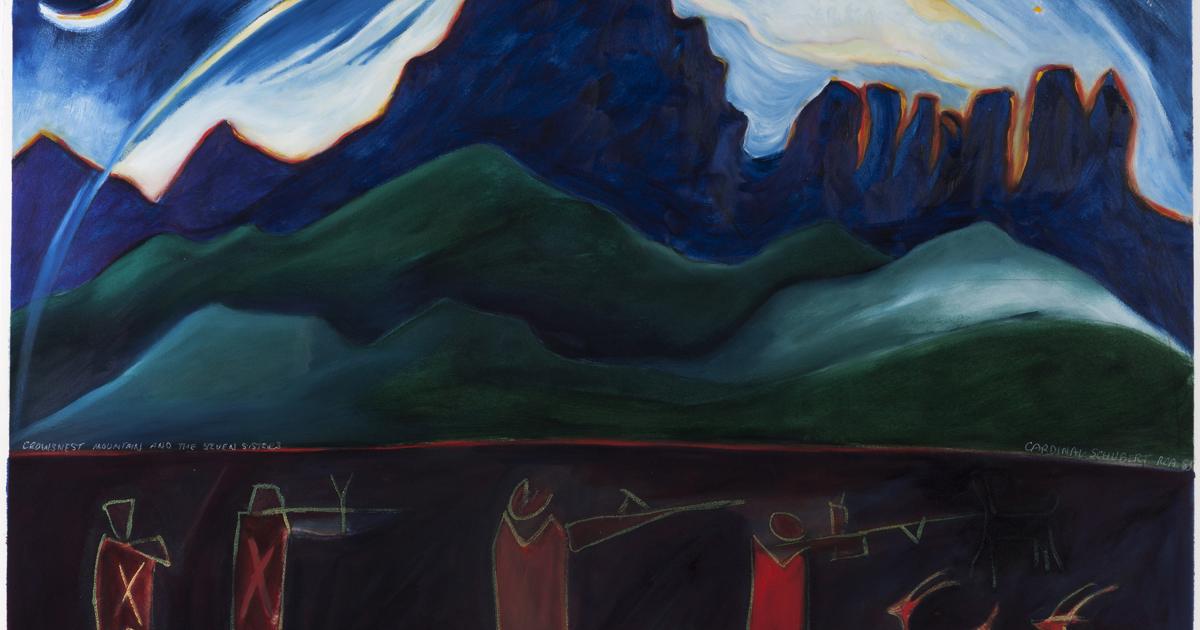TREX Southeast Open Call for Artists
TREX Southeast invites artists based in southeast Alberta (see map) to submit proposals for consideration for upcoming visual art exhibitions.
TREX Southeast invites artists based in southeast Alberta (see map) to submit proposals for consideration for upcoming visual art exhibitions.
Gallery Exhibition Date: February 4 - March 1, 2025
Closing Reception: February 27 from 6:00 pm to 8:00 pm at The Carrot
Rhythms of the Earth: A Celebration of Black History Month
This February, Deep Freeze is proud to present the Rhythms of the Earth Visual Art Gallery, showcasing the talent and stories of two remarkable artists: Gabrielle Songolo and Khiry Tafari.
Date: February 27, 2025 | 5:30 pm
Location: Royal Alberta Museum
Tickets: $21 (includes RAM admission and all materials) This workshop is free for Indigenous Peoples.
Do you have a pair of moccasins you no longer wear but keep for sentimental reasons? Preserving them with proper storage will allow you to carry the memory of not only the places they have been, but of the people who wore them.
A/P is pleased to present NOTICE ME! by HOT 4 THE MOMENT, as our first exhibition in 2025.
NOTICE ME! will run from January 24 - March 14, 2025.
Join us for the Opening Reception and Artist Talk on January 24 from 7-9pm.
The artists will begin their artist talk at 7pm, followed by the reception until 9pm.
About the exhibition:
Location: A/P Studio
Cost: $135.00
Get Started with Letterpress printing and try our Vandercook press, Platen press, and Nolan press!
Looking for a quick and beautiful way to do relief printing? Using printing presses will give you the speed and flexibility to take your art to the next level. Compatible with Linocut printing, Polymer plates and Woodcuts, this class gives you the knowledge to lock these things up with lead type or on their own in their two user friendly presses!
Dr. Joane Cardinal-Schubert
Crowsnest Mountain and the Seven Sisters, 1989
oil on paper
Collection of the Alberta Foundation for the Arts
The holiday season is a wonderful time to reflect with family and friends. At the Alberta Foundation for the Arts, we are forging a deeper understanding of our role and responsibilities as Alberta’s provincial arts funder and principal supporter. We are in a period of renewal as we look forward to new opportunities. Whether it is the performing arts, literary, visual, film or video, the AFA’s job is to help individual artists and organizations explore, practice, create and promote their exceptional work.
We have a profound sense of optimism for the years ahead that is buoyed by the Alberta government’s commitment to increase AFA funding to a record-level $39.1 million by 2027.
We look forward to continuing our work with government for the betterment of Alberta’s arts sector.
Art and Alberta’s artists are at the heart of everything that we do. In that vein, I’m proud to continue the AFA’s tradition of highlighting an artwork from our collection. This year, I’m pleased to feature Crowsnest Mountain and the Seven Sisters by Dr. Joane Cardinal-Schubert.
This beautiful Indigenous work is representative of the mountain landscape in Southern Alberta. Cardinal-Schubert’s use of color is so appropriate during the holiday season.
On behalf of the AFA Board of Directors and staff, please accept my best wishes for a safe and restful holiday season, Merry Christmas and a happy and prosperous New Year.
Cynthia P. Moore, Chair
Alberta Foundation for the Arts

A special holiday greeting from AFA Board Chair Cynthia P. Moore.
A special holiday greeting from AFA Board Chair Cynthia P. Moore.
A special holiday greeting from AFA Board Chair Cynthia P. Moore.
Mitchell Art Gallery invites you to our Winter 2025 exhibition, Sydney Frances Pascal: kw7íkwl̓acwmíntsinlhkan | i dream of you. The exhibition runs January 17 - March 29, 2025.